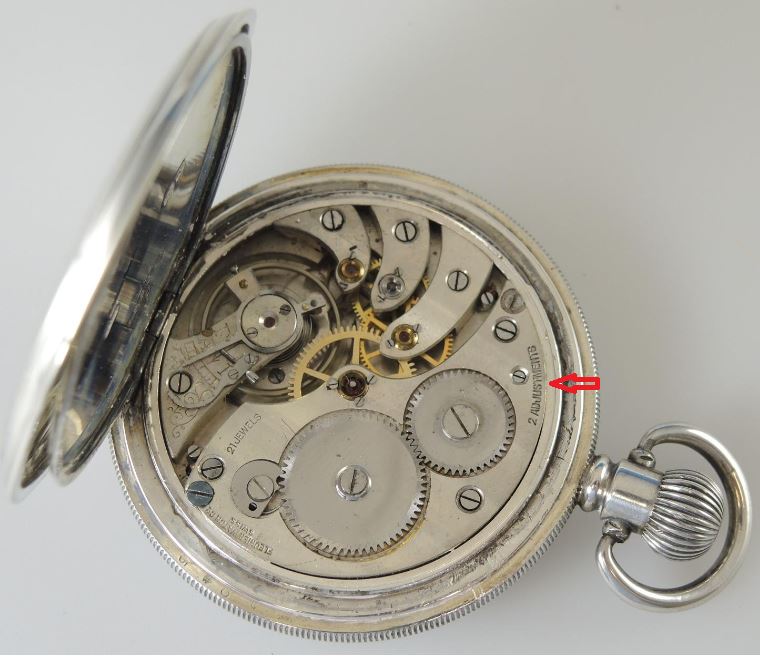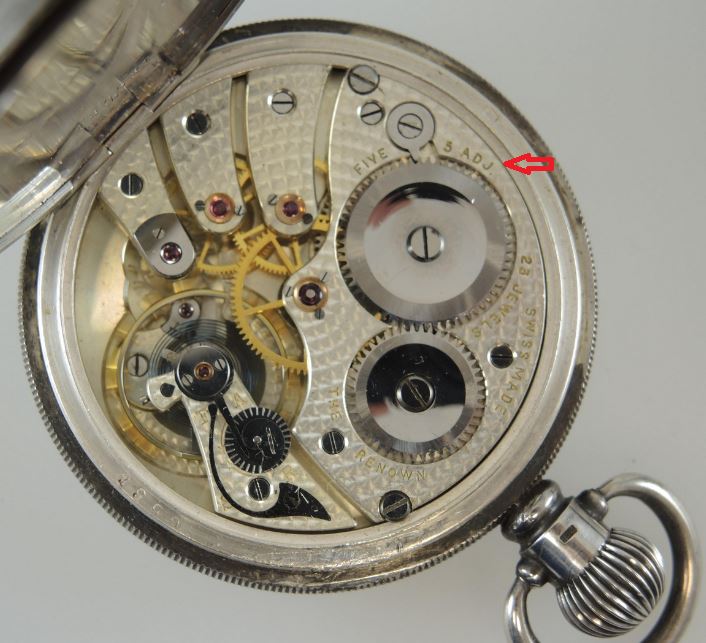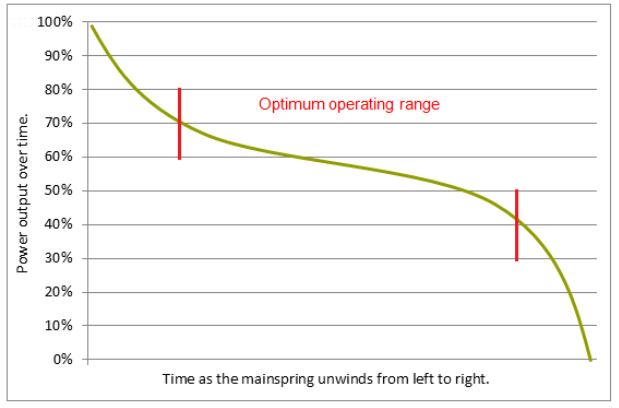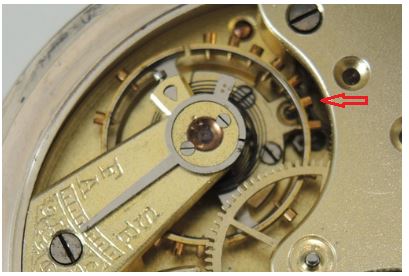Last updated on June 27, 2024
I am on the lookout for my next purchase and I’m hoping to find a good antique hunter pocket watch. I have been looking for the past couple of weeks online and I have come across something I have not noticed before. This is the use of the word adjustments stamped on the movement of the watch. It seems to be more common from the very late 19th century. This post is going to explain what I have learnt in the past couple of weeks about watch adjustments.
In an earlier post, I mentioned the effect of gravity on the movement of a pocket watch and how it can have an effect on timekeeping. If we consider for a moment that the watch movement is fixed in relation to the case. The effect of gravity on the movement will change according to the position in relation to the pull of gravity. For example, if we imagine that the pocket watch is lying dial-up on a table the pull of gravity will have a different effect on the components than if the watch was sitting upright in a waistcoat pocket.

Positional effect of gravity
Imagine during the course of a day how many times a watch will change position. A pocket watch that is in the front pocket of a pair of trousers could be dial-down and horizontal when the owner is sitting, upright when they are standing and dial-up on a desk during working hours. During each of those positions, the effect of gravity will have a different effect on the timekeeping of the watch as gravity is pulling on different components of the movement. To counter these positional effects the watch can be adjusted to keep time relatively consistently.
A pocket watch is going to have a much more stable positional variance throughout the day than an antique wristwatch. The pocket watch will spend large chunks of the day in a single position, for example sitting dial-up on a desk during the working day. A wristwatch is going to move through a myriad of positions during a single hour. It will constantly change position every time your wrist moves. Therefore, making adjustments to the positional effects on a wristwatch will be more complicated. In this post, we will concentrate on antique pocket watches.
Positions
There are six positions that are taken into account when considering the positional effect of gravity on a pocket watch movement. One of these positions is virtually redundant as a pocket watch is unlikely to be carried in this position. In respect to an antique pocket watch, the positions are:
1) Dial up.
2) Dial down.
These are also referred to as horizontal or lying positions.
3) Pendant up (or crown up).
4) Pendant right.
5) Pendant left.
6) Pendant down.
These are referred to as the vertical positions, as the pocket watch dial is upright in each instance. The sixth position is the least important as a pocket watch is unlikely to be carried in this position.
The time differences and balance wheel amplitude will be compared in each of these positions and adjustments will be made to bring the variations as close together as possible. An antique pocket watch with ‘2 adjustments’ stamped on the movement will have been corrected for the first two positions (Dial Up, Dial Down). A movement stamped “5 adjustments” will have been corrected for the first five positions.

The horizontal positions will be corrected first, before moving on to the vertical positions. Straight from the factory, there should be no issues with wear and tear, lubrication or damage. The factory technicians will have adjusted the balance wheel rotation by fine-tuning the tiny little weighted screws that are on the outer circumference of the wheel.
Other adjustments
There are two other adjustments that could be made to an antique pocket watch, temperature and isochronism. Temperature affects timekeeping because the balance wheel and hairspring can expand or contract as the temperature changes. Typically, when the temperature rises, the balance wheel will expand and the oscillations will become longer, so the watch will run slower. The opposite applies in colder temperatures. This issue is largely resolved by using different combinations of metal alloys that are immune to expansion.
Isochronism refers to the ability of a watch to keep time, regardless of the mainspring’s level of tension. In early watches, when the mainspring unwound, the torque is not consistent. This meant the watch would run slower as the day progressed because the mainspring was generating less power. The power tends to fade as shown in the diagram below. There is a surge of power at the beginning of the unwind, it flattens out during the middle and then fades considerably in the final stages of the unwind. This leads to inconsistent timekeeping.

Initially, this was resolved by adding a gearing system called a fusee. The fusee offered little mechanical advantage early in the unwind and increased it as the power faded. Another solution, from the early 20th century, was called the stop-work mechanism. This prevented the watch from being wound outside of the optimum operating range shown in the diagram above. In later movements, the entire problem was resolved by improving the quality of the materials used in the mainspring.
Servicing
For an antique pocket watch, there are additional factors to be considered. Cleaning and servicing may be required. Pivots could be damaged or lack lubrication. The balance wheel jewels could be dirty or damaged. The balance wheel or the hairspring could be rubbing against another component during rotation. Only after these issues have been resolved, could a watchmaker then fine-tune using the balance wheel weights.

All high-quality pocket watches from the late 19th century onwards would have had 5 adjustments or more. The railroad grade watches of the late 19th and early 20th centuries were expected to maintain a maximum time variance of 30 seconds a week. This is approximately 4 seconds a day, which is in line with the requirements for a modern COSC certified chronometer.
I hope this helps explain what the adjustment stamps on the movement mean and how a watchmaker may have fine-tuned an antique pocket watch.
A list of additional posts regarding antique watches can be found on the Guides page.
